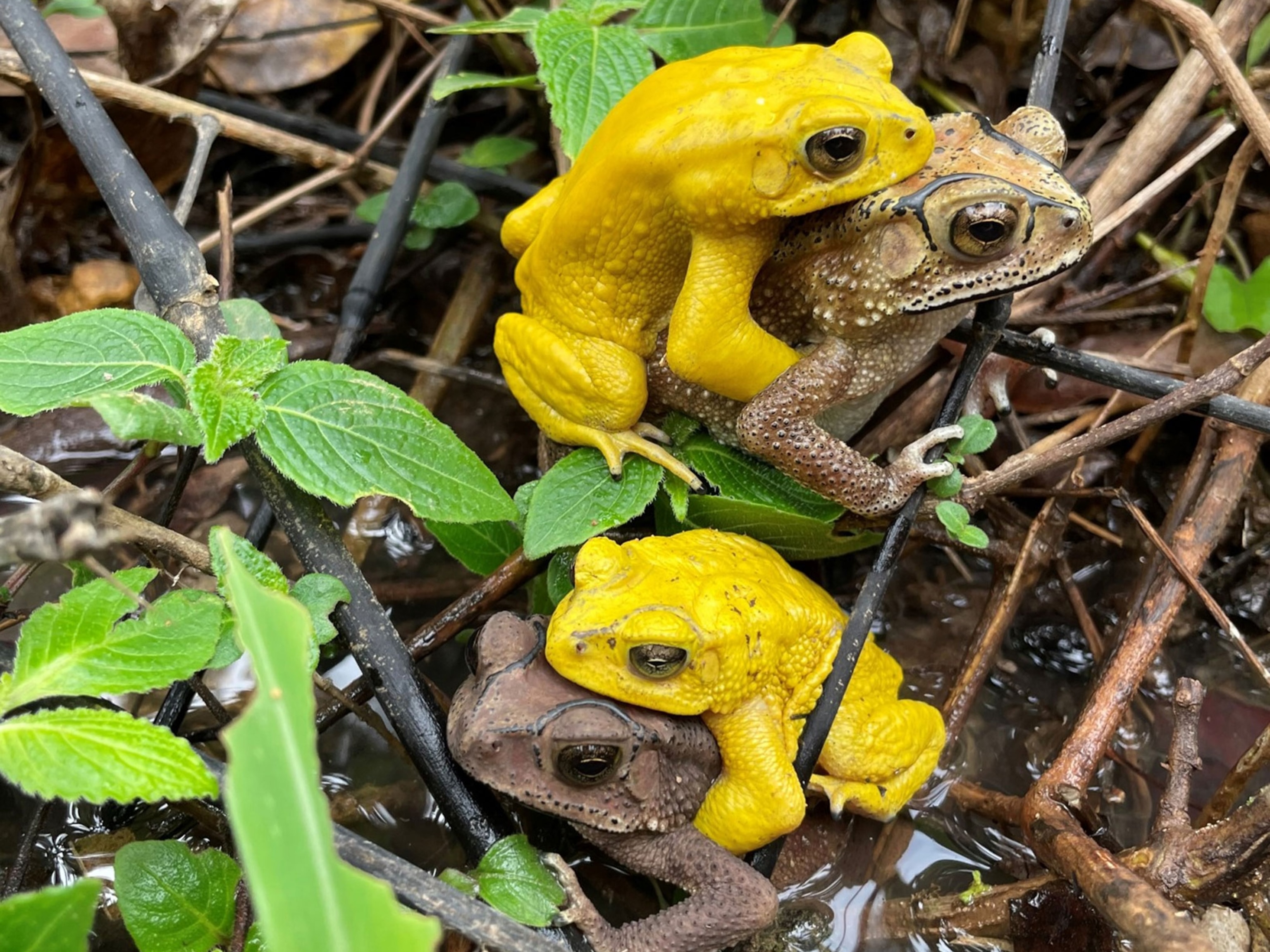
New Amazon Frog Named After Mythical Monster
The amphibian, which lives in Brazil's Floresta Nacional de Pau-Rosa, gets its name from a tall beast said to lurk in the rain forest.
Pedro Peloso heard the new species of frog long before he saw it.
Its call was “pretty generic" as far as frogs go, but it was intriguing enough that he followed the sound straight to a tree in Brazil's Floresta Nacional de Pau-Rosa, a protected area in the state of Amazonas (map).
The mystery amphibian was too high to simply reach up and grab, so Peloso had to carefully stand up in his fishing boat and pull the tree branches down, revealing a bright-yellow frog with orange feet.
“I had never seen anything like it before,” said Peloso, a herpetologist who divides his time between New York City's American Museum of Natural History and Brazil's Museu Paraense Emílio Goeldi.
Peloso named the species Dendropsophus mapinguari, after a mythical rain forest beast called the mapinguari. The legend of the tall, furry monster with giant claws and a second mouth in its belly likely originates from sightings of the extinct giant ground sloth, which once roamed South America.
The name doesn't suggest the 22-millimeter-long frog is scary—instead, Peloso wanted to honor the culture of this region in north-central Brazil. (Also see "Seven New Mini-Frogs Found—Among Smallest Known.")
Naming the Beast
In 2009, Peloso traveled to the national park to catalog as many reptiles and amphibians he could find. The Brazilian government, which had recently set aside the region, funded the expedition simply to find out what was there.
Peloso’s crew collected animals day and night, setting traps and exploring the river in small boats.
In just a month, the team found four new species—including the monster frog. (Read about tree frogs in National Geographic magazine.)
To confirm it was new to science, Peloso examined specimens in several museums and spoke with herpetology experts around the world. He also sequenced the frog’s DNA and compared it with other Dendropsophus frogs, which revealed it as a unique animal, according to a study published April 30 in the South American Journal of Herpetology.
“The researchers did an extremely thorough job documenting their find,” with detailed physical descriptions and by tentatively placing the frogs on an evolutionary tree, says Taran Grant, a herpetologist at the University of São Paulo who wasn’t involved in the research.
Batty Relative
The new frog has a celebrity cousin, Dendropsophus ozzyi, which was found on the same expedition. The so-called "bat frog" makes a batlike call that inspired Peloso and colleagues to name it after Ozzy Osbourne, who bit the head off a bat at a 1981 concert. (He later said he thought it was rubber.)
Osborne was so pleased with the bat frog's name he gave backstage passes to one of the frog’s discovers at a recent concert in Brazil.





